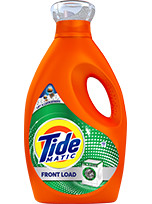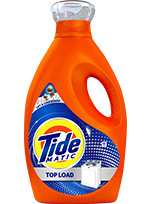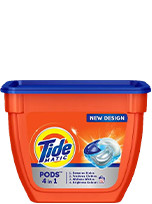How many pieces of clothing can you wash at the same time? Is there a standard size when it comes to washing machines? How heavy is an average load of laundry? You may have asked these questions before, so it’s time to get answers. Read on to find out all you need to know about different types of washers and their capacity, how you can calculate load size to avoid overloading your washer, and how to load your washing machine in general.
Size of washing machines by type
We understand that capacity is an important factor when you buy a new washing machine, so it’s useful to know how much space you have inside your washer.
Compact washers: 65-70 litres
Standard top-load washing machines: 87-113 litres
Front-load washing machines: 119-141 litres
Guide to calculate the capacity of your washing machine
Washing machines differ in size and capacity, so there’s no way of telling the size of your washing machine’s drum just by knowing its type. If you don’t have the manual at hand and you’d like to know the drum’s size anyway, you can use a simple math formula:
Volume in cubic centimetre = r times r times pi times D
In this formula:
r = the radius of the drum in cm, which is half of the diameter
pi = approximately 3.141
D = the depth of your washer in cm
To give you an example, if you have a washer with a diameter of 60 cm and a depth of 35 cm, the volume of your drum will be 30*30*3.141*35 = 98,941 cm3, which is 98.941 litres.
Calculating the load size
Now that you know your drum’s size and your washer’s capacity, we also have to talk about how much you can fit in there – your load size. You will need this information to wash effectively while being able to save money, water and energy. Load size is also important to know for dosing detergents correctly, so you have perfect laundry results every time. Follow our load-size recommendations and get everything right.
Medium or regular load. If your drum is only half full, that’s a regular or medium load.
Large load. If your washing machine is three-quarters full, it’s a large load.
Extra-large load. An extra-large amount of laundry sometimes requires an extra-large load size. However, it’s important not to overload the machine, you always have to make sure your clothes can tumble freely inside the drum.
Before starting the program, check the amount of detergent you’re about to use, as different load sizes need different amounts.
Load size chart for your washing machine
If you prefer to calculate with weight, you can do that too, when determining the load size:
Medium or regular load. If you have about 3 kgs of clothes, it will be a medium load.
Large load. If you’re about to wash 5 kgs of clothes, it will be a large load.
Extra-large load. Anything above 5 kgs can be considered extra-large.
If you wouldn’t like to eyeball how much your laundry weighs, we also have a visual guide for you:
Medium or regular load. If your laundry is only an armload or less, your load is a medium load.
Large load. If you have a full armload at hand, you’re dealing with a large load.
Extra-large load. If you have to make two trips to the washer, you definitely have an extra-large load to take care of.
Finally, here’s an itemised version of load sizes so you can decide which one you’re dealing with.
Medium or regular load. It includes approximately 6 T-shirts, 2 jumpers, 3 pairs of pants, 2 skirts, 3 pairs of underwear and a pair of socks.
Large load. It consists of about 12 T-shirts, 2 jumpers, 5 pairs of pants, 3 skirts, 4 pairs of underwear and 6 pairs of socks.
Extra-large load. If you have a load that exceeds the large one, you have yourself an extra-large load.
How to load a washing machine
Loading a washing machine is not just about putting clothes in it until it’s full. People often overload washers because they think it’s full when it’s full to the brim. In reality, they’re not leaving any space for the garments to tumble, and the water to fill up the drum and circulate the detergent. Every time you overload the machine, you’re hindering the washing process, and you risk a future mechanical failure.
In the case of top-load washers you have probably overloaded your washing machine if you’ve covered up the impeller in your washer, and it can’t move your clothes around anymore. Make sure you take out a few garments and distribute the rest evenly, so the washer doesn’t start walking around the bathroom mid-cycle. For front-load washing machines, you have the palm trick you can use to check if you’ve accidentally overloaded it: simply place your hand into the drum. If it fits between the wall of the drum and the clothes you’re about to wash, your load size is perfectly fine. If it doesn’t fit, it’s time to take something out.
The other end of the spectrum is when you don’t have enough clothes to wash, but you really just need to do one load. In this case, check to see whether your washer has a half-load setting, as they usually use less water.
Frequently asked questions on load sizes and washing machines
Related articles
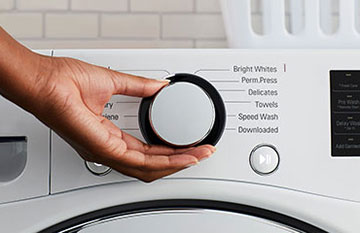
How to Read Washing Labels
Laundry symbols may seem like another language, but they’re very important.
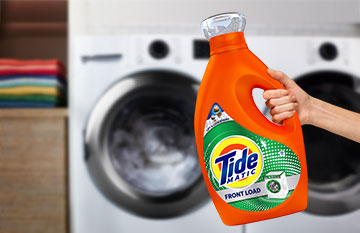
How Much Tide Liquid Detergent to Use In a Washing Machine
If you’re not used to liquid detergents when doing the laundry, dosing may cause some confusion.
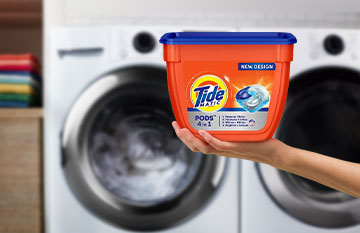
All About Tide PODS®
Meet the new Tide Matic 4-in-1 PODS®, your laundry solution for all your dirty problems.

